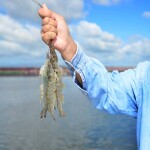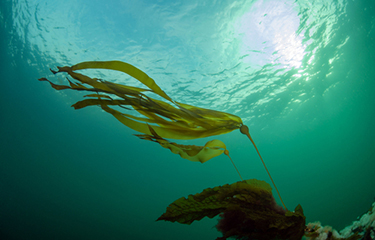Bull kelp does not warrant listing under the U.S. Endangered Species Act (ESA), according to NOAA Fisheries.
The Center for Biological Diversity, a nonprofit known for its work on protecting endangered species and other wildlife through legal action, petitioned the agency to declare bull kelp a threatened or endangered species in September 2022.
“Extreme heat events over the past eight years have caused immense damage to bull kelp populations, so NOAA Fisheries needs to act quickly,” Center science intern Mukta Kelkar said in a statement when the petition was filed. “Bull kelp is an iconic West Coast species and important habitat for fish and sea otters. Endangered Species Act protection will give our kelp forests a safety net.”
Of particular concern was a 2014 marine heat wave, which CBD said decreased bull kelp populations by 90 percent along parts of the California coast. The kelp has yet to recover to its pre-2014 levels.
"It's the longest bull kelp have gone without recovering in 38 years,” CBD said.
Other major threats to the species cited include climate change, thermal pollution, heavy metal pollution, coastal darkening, and oil spills, according to CBD.
“There are no existing regulatory mechanisms that are sufficient to protect this algae from extinction. Although some bull kelp habitat is protected by national marine sanctuaries, these sanctuaries have so far failed to prevent population declines,” CBD said in its petition. “Listing of the bull kelp as a threatened or endangered species and designating critical habitat under the ESA is necessary to provide critical legal protections to ensure the survival of this highly imperiled algae species.”
In its 90-day finding, which is required for any ESA designation, NOAA Fisheries said the available evidence didn’t support the Center for Biological Diversity’s claims.
“While the petitioner claims that alarming declines in bull kelp populations are occurring throughout the species' range, they fail to provide substantial scientific or commercial information indicating that bull kelp may be declining and may warrant listing based on status throughout all or a significant portion of its range,” NOAA Fisheries said in its finding.
The agency found that the bull kelp population increased along the coast of Alaska, where bull kelp occurrence is consistent and known. While it said it is unclear what the species’ long-term trends are in the Aleutian Islands, NOAA Fisheries said short-term trends in a small area do not represent the status of the species across its entire range – noting that the 2014 heat wave that impacted bull kelp along the California coast did not impact the species as a whole.
“Almost all populations from Alaska to Oregon appear to be resilient to marine heat waves, especially the most recent marine heatwave of 2014 to 2016,” the agency found.
Bull kelp is one of the primary seaweed species grown for commercial aquaculture along the West Coast. In Alaska, production of sugar, ribbon, and bull kelp grew by 200 percent from 2017 to 2019, resulting in an annual commercial harvest of 112,000 pounds, according to NOAA Fisheries. In 2022, the U.S. Department of Agriculture (USDA) announced a USD 500,000 (EUR 442,000) grant to boost kelp aquaculture in Alaska, and federal lawmakers have introduced legislation to study the growing industry. Congress is also considering establish a new office of aquaculture within USDA to help promote and foster kelp aquaculture.
Photo courtesy of Shutterstock / Philip Garner







